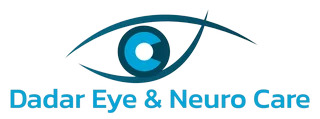+918042757344

This is your website preview.
Currently it only shows your basic business info. Start adding relevant business details such as description, images and products or services to gain your customers attention by using Boost 360 android app / iOS App / web portal.
Description
Glaucoma is a group of eye diseases that damage the optic nerve, often due to elevated intraocular pressure (IOP). Early detection is crucial since glaucoma typically progresses slowly and painlessly, making it difficult to notice symptoms until significant vision loss has occurred. Comprehensive diagnostic tests are essential for early identification, monitoring, and treatment. Here are the primary diagnostic techniques used for glaucoma: 1. Tonometry (Measuring Intraocular Pressure) Purpose: To measure the pressure inside the eye (intraocular pressure or IOP). Elevated IOP is a significant risk factor for glaucoma. Types: Goldmann Applanation Tonometry: The gold standard, where a small probe touches the cornea after numbing drops are applied to measure the resistance of the cornea. Non-contact Tonometry (Air-Puff Test): Uses a puff of air to flatten the cornea and calculate IOP. Less accurate than Goldmann but often used in screenings. Tono-Pen: A portable, handheld device used to measure IOP, often for patients unable to use a traditional slit lamp. 2. Gonioscopy Purpose: To examine the drainage angle of the eye, where the aqueous humor exits. This test helps distinguish between open-angle and angle-closure glaucoma. Procedure: A special lens (goniolens) with mirrors is placed on the eye to visualize the drainage angle. The doctor can assess whether the angle is open, narrow, or blocked, which is important for diagnosing the type of glaucoma. 3. Ophthalmoscopy (Fundoscopy) Purpose: To evaluate the health of the optic nerve, which is damaged in glaucoma. Procedure: The doctor uses a special instrument called an ophthalmoscope to examine the back of the eye (the retina) and the optic nerve head. Optic nerve cupping (an increase in the depression at the center of the optic nerve) is a common indicator of glaucoma. 4. Visual Field Testing (Perimetry) Purpose: To assess peripheral (side) vision, which is often affected first by glaucoma. Procedure: The patient looks straight ahead while lights of varying intensity appear in different areas of their visual field. The patient presses a button when they see a light, and the test maps the patient’s field of vision. Loss of peripheral vision can indicate glaucoma progression. Humphrey Field Analyzer: The most commonly used machine for automated visual field testing. 5. Optical Coherence Tomography (OCT) Purpose: To create detailed images of the retina and optic nerve, allowing precise measurement of the retinal nerve fiber layer (RNFL) thickness. Procedure: A non-invasive imaging technique that uses light waves to capture cross-sectional images of the retina. In glaucoma, the RNFL thins as the disease progresses, and OCT can monitor these changes over time. 6. Pachymetry (Measuring Corneal Thickness) Purpose: To measure the thickness of the cornea, which can affect IOP readings and glaucoma risk. Procedure: A handheld device called a pachymeter measures the thickness of the cornea. Patients with thinner corneas are at higher risk for glaucoma and may have underestimated IOP measurements, while those with thicker corneas may have overestimated IOP. 7. Retinal Photography Purpose: To capture detailed images of the optic nerve head and retina for comparison over time. Procedure: A specialized camera takes high-resolution photographs of the back of the eye. These images help document changes in the optic nerve and retina associated with glaucoma. 8. Scanning Laser Polarimetry (GDx) Purpose: To measure the thickness of the nerve fiber layer of the retina, another indicator of glaucoma damage. Procedure: Similar to OCT, this test uses polarized light to assess the nerve fiber layer. Thinning of this layer indicates glaucomatous damage. 9. Heidelberg Retina Tomography (HRT) Purpose: To create a 3D image of the optic nerve head to evaluate its structure and monitor glaucoma progression. Procedure: A laser device scans the optic nerve to generate detailed images, helping detect any changes in the optic nerve that might suggest glaucoma damage. 10. Anterior Segment Imaging Purpose: To examine the front part of the eye, including the iris and the drainage angle. Techniques: Ultrasound Biomicroscopy (UBM): High-frequency ultrasound that provides detailed images of the anterior chamber and drainage structures. Anterior Segment OCT: Provides cross-sectional images of the front part of the eye, useful in assessing the angle and other anterior structures. 11. Electrophysiological Testing Purpose: To assess the function of the optic nerve and retinal ganglion cells.

